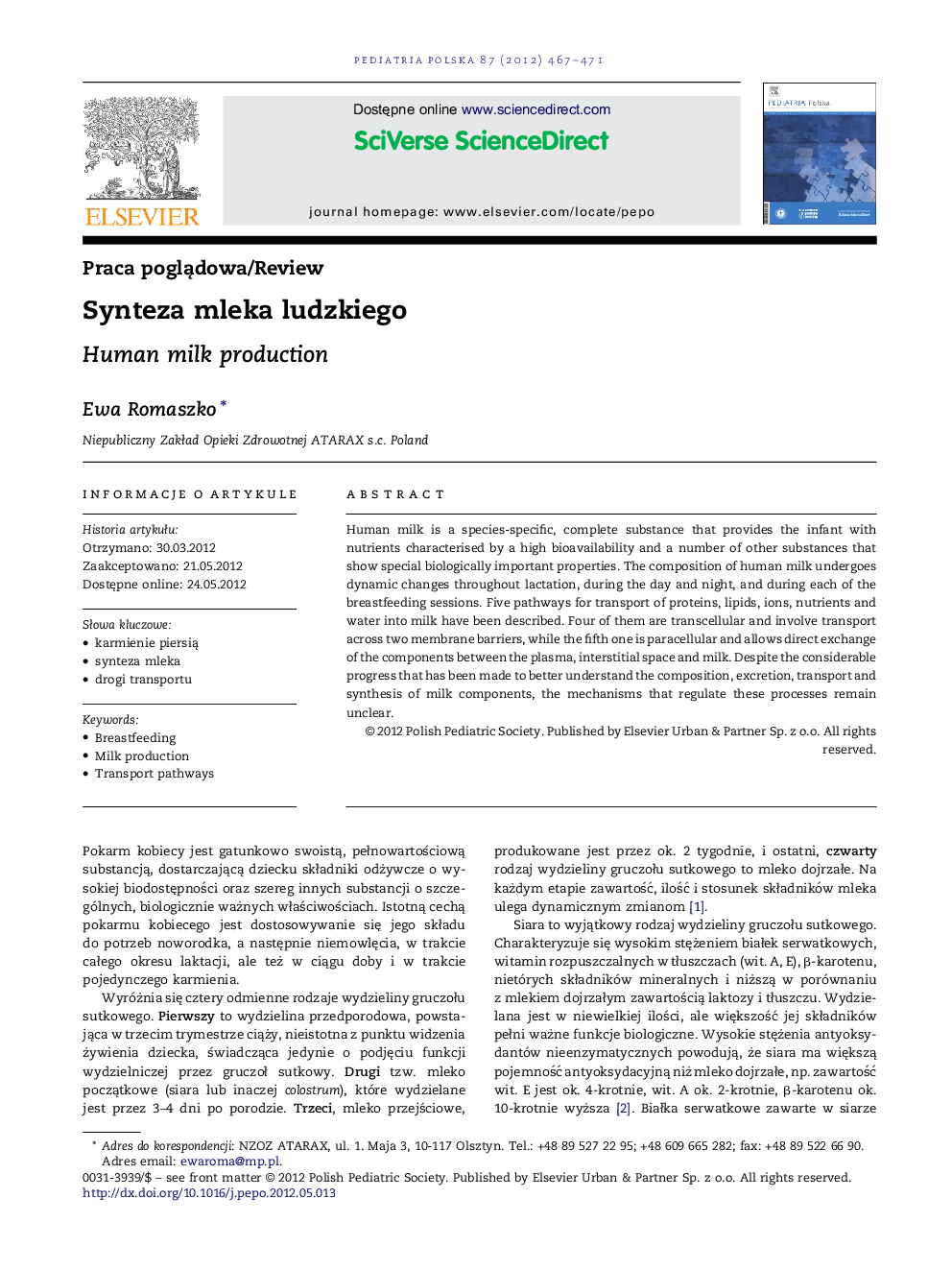| Article ID | Journal | Published Year | Pages | File Type |
|---|---|---|---|---|
| 10163360 | Pediatria Polska | 2012 | 5 Pages |
Abstract
Human milk is a species-specific, complete substance that provides the infant with nutrients characterised by a high bioavailability and a number of other substances that show special biologically important properties. The composition of human milk undergoes dynamic changes throughout lactation, during the day and night, and during each of the breastfeeding sessions. Five pathways for transport of proteins, lipids, ions, nutrients and water into milk have been described. Four of them are transcellular and involve transport across two membrane barriers, while the fifth one is paracellular and allows direct exchange of the components between the plasma, interstitial space and milk. Despite the considerable progress that has been made to better understand the composition, excretion, transport and synthesis of milk components, the mechanisms that regulate these processes remain unclear.
Related Topics
Health Sciences
Medicine and Dentistry
Dermatology
Authors
Ewa Romaszko,
